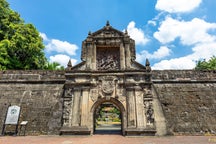Clark International Airport

Travelers looking for a hassle-free and less congested travel experience often choose Clark International Airport as their arrival and departure point.
With a growing number of international and local flights from Clark Airport, passengers can easily travel to and from top Philippine destinations like Boracay Island, Cebu Island Province, Coron and El Nido Towns in Palawan, Siargao Island, and Batanes Island. It also services international flights to and from destinations like South Korea, Hong Kong, Singapore, Taiwan and Thailand.
Clark International Airport continues to expand its services and flight routes, making it a top choice for travelers looking for a seamless and stress-free airport experience.
Getting There
Clark International Airport is located about 80 kilometers north of Manila City and is easily accessible via major expressways such as NLEX (North Luzon Expressway) and SCTEX (Subic-Clark-Tarlac Expressway).
Travelers coming from nearby provinces like Pampanga, Tarlac, Baguio, and other parts of Luzon Region like Manila City, can reach the airport through a shuttle transfer service to Clark Airport, private cars or car rental, and public bus commuters.
For those flying into Clark Airport and planning to explore the region, there are various Pampanga tours available, allowing visitors to discover historical sites, culinary hotspots, and natural attractions in and around Clark Airport.
What to Expect at Clark International Airport
Clark International Airport boasts a modern passenger terminal, designed to accommodate millions of travelers annually with efficient check-in counters, spacious waiting areas, and upgraded security measures. Passengers flying through Clark Airport can enjoy duty-free shopping, dining options, and VIP lounges, ensuring a comfortable airport experience.
With flights from Clark Airport connecting travelers to top local and international destinations, the airport continues to expand its route network, making it a key hub for business and leisure travelers.









